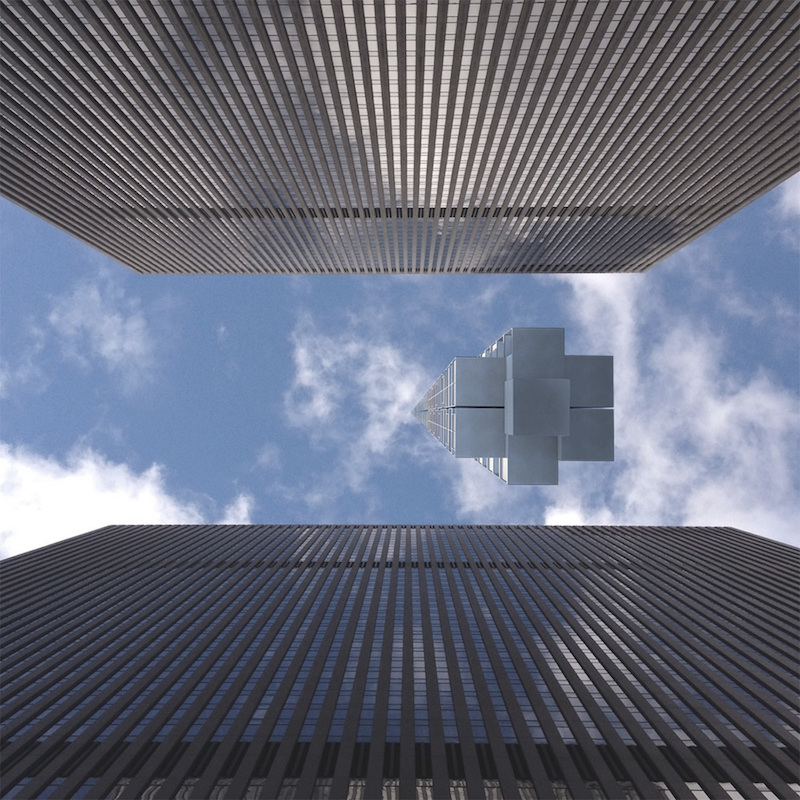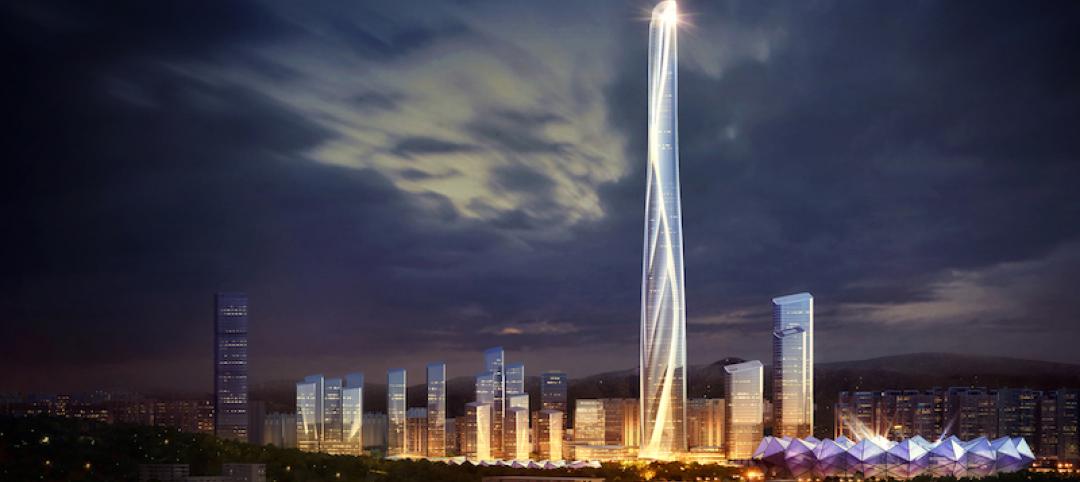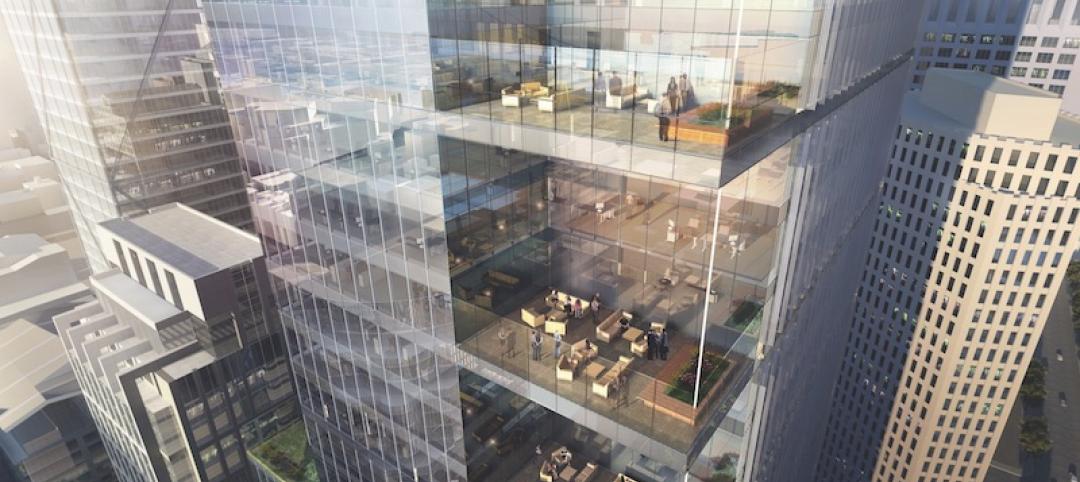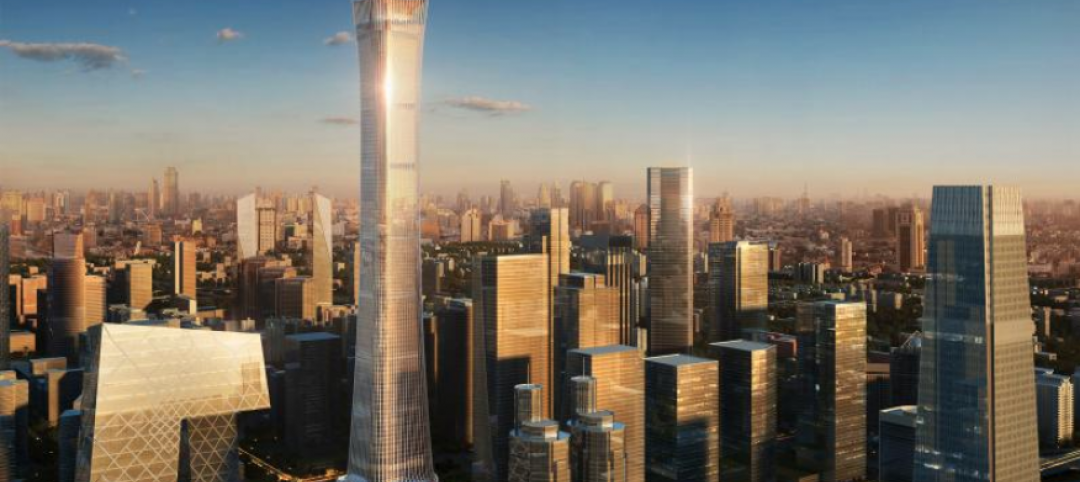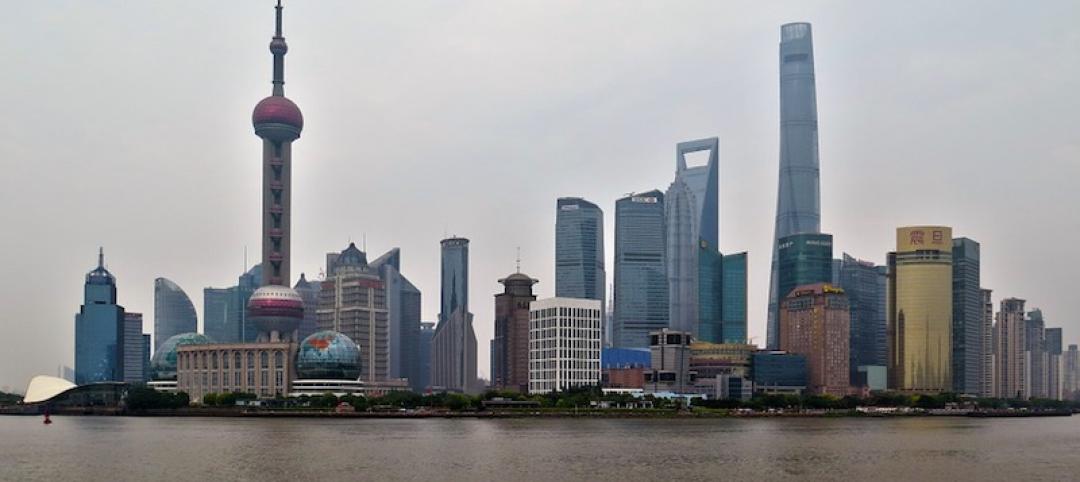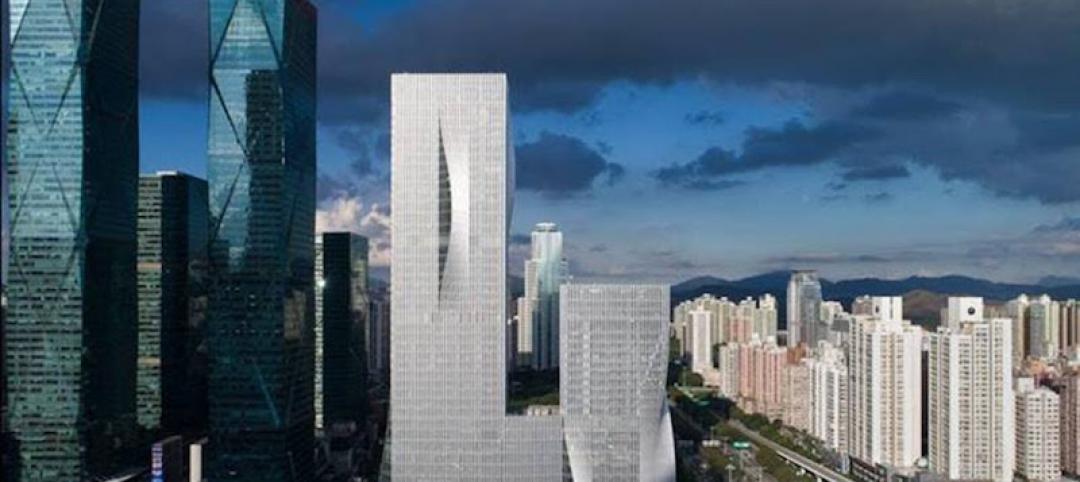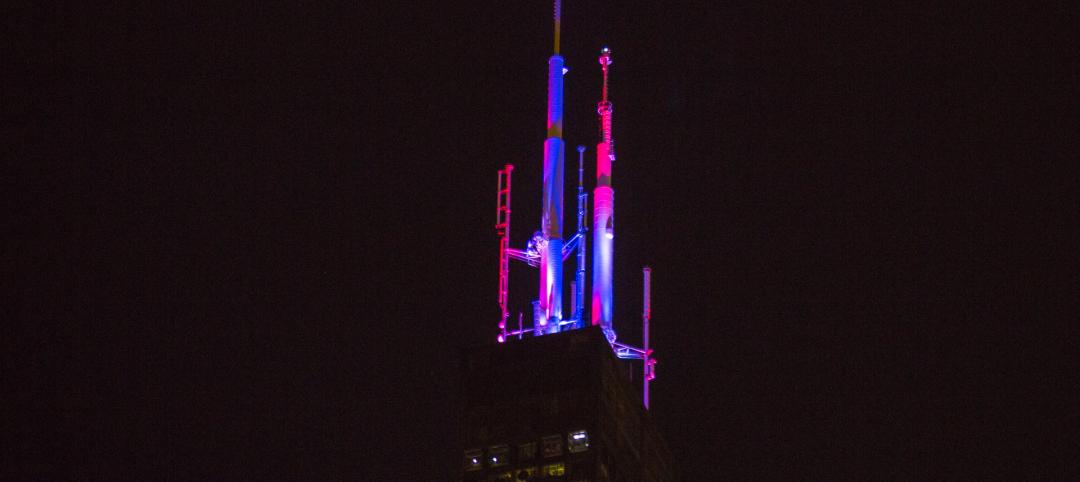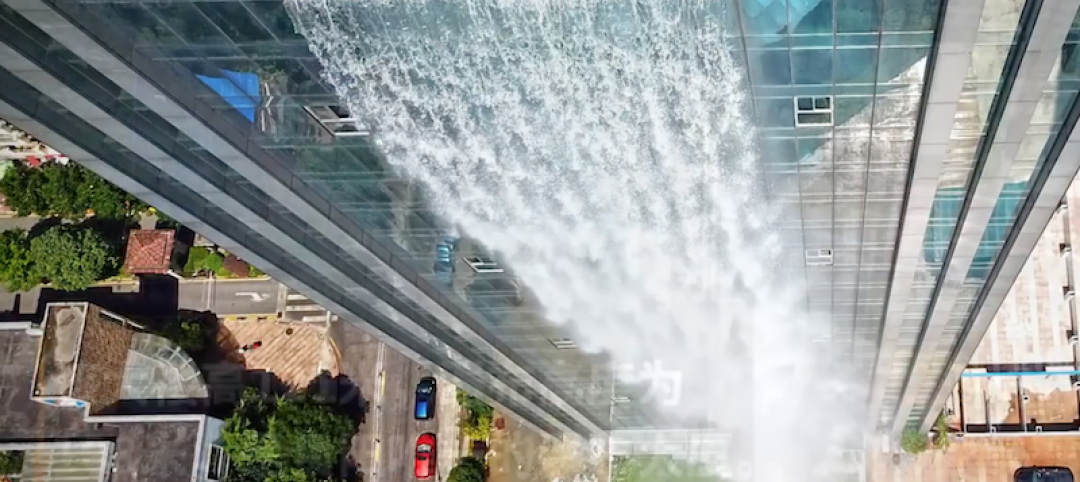Clouds Architecture Office is a New York-based firm known for their speculative designs and innovative (and often times seemingly unfeasible) approaches to architecture.
Among their inventive portfolio is a proposal for Martian architecture with the Mars Ice Home, a series of self-sufficient machine-like dwellings the drift among the clouds known as Cloud Skippers, and a concept for disaster relief that allows people to float above their ruined buildings or neighborhoods while they are being repaired called Cloud City. The firm’s most recent proposal, however, may also be its most radical.
The idea is to create a supertall skyscraper that, instead of springing from the Earth and climbing towards the sky, is suspended from an orbiting asteroid and hangs towards the ground like a giant stalactite (does that make it an earthscraper?).
Here is how the speculative tower, dubbed Analemma Tower (named after the figure-8 path the sun makes in the sky when viewed at the same time of day throughout the year), would work: A large asteroid would be placed into orbit over earth. From this asteroid, a high strength cable would be lowered towards the surface of the planet from which the supertall tower can be suspended. Since it is suspended in air, the tower can be constructed anywhere and transported to the final location. For this proposal, the tower would be constructed over Dubai since the city has proven to be a specialist in tall building construction while keeping costs at one-fifth those associated New York City construction.
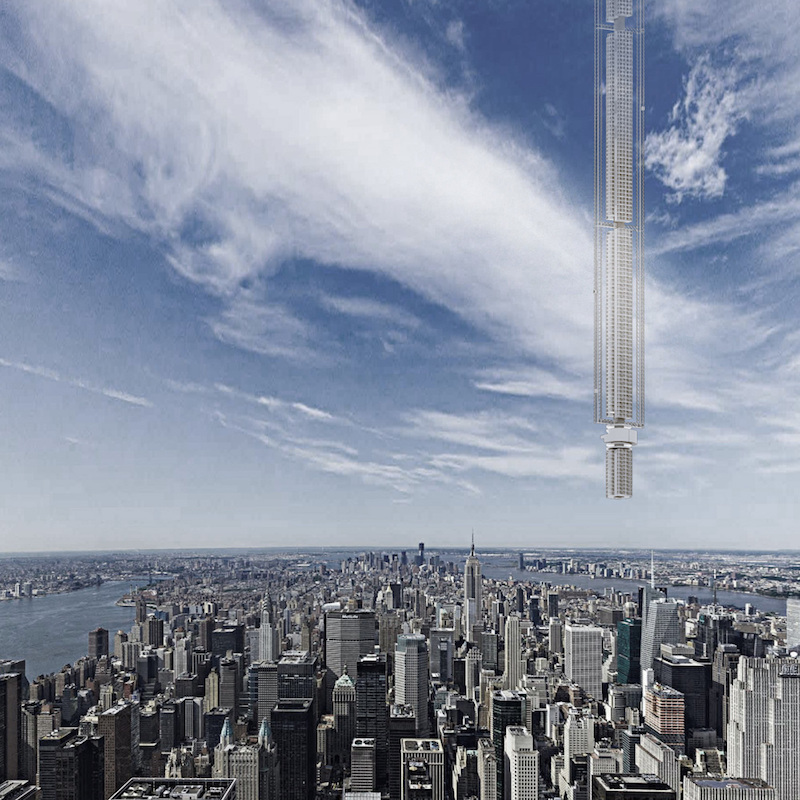 Rendering courtesy of Clouds Architecture.
Rendering courtesy of Clouds Architecture.
The asteroid’s geosynchronous orbit would match earth’s sidereal rotation period of one day. The tower would trace a figure-8 shape and return to the same position in the sky each day. The building would travel between the northern and southern hemispheres on a daily loop. At the bottom of the figure-8 pattern, the tower would move at its slowest speed to allow for the possibility of the towers residents to interface with the planet’s surface. The slowest part of the trajectory would occur over New York City.
If you’re thinking all of this sounds like science-fiction hokum, Clouds Architecture has a response, “Manipulating asteroids is no longer relegated to science fiction. In 2015 the European Space Agency sparked a new round of investment in asteroid mining concerns by proving with its Rosetta mission that it's possible to rendezvous and land on a spinning comet,” the firm writes on its website. “NASA has scheduled an asteroid retrieval mission for 2021 which aims to prove the feasibility of capturing and relocating an asteroid.”
The tower itself would be sectioned into several components. The office, business, and commercial components would be closest to the bottom, followed by garden and agricultural areas, and then a large section for residential. The top of the tower would be devoted to devotional activities. As one ventures higher into the building, the size and shape of the windows changes to account for pressure and temperature differentials. Due to the curvature of the earth, the very top of the tower would get an additional 40 minutes of sunlight each day but due to the near vacuum and -40C temperatures outside would prevent people from going outside and would make living on this level difficult.
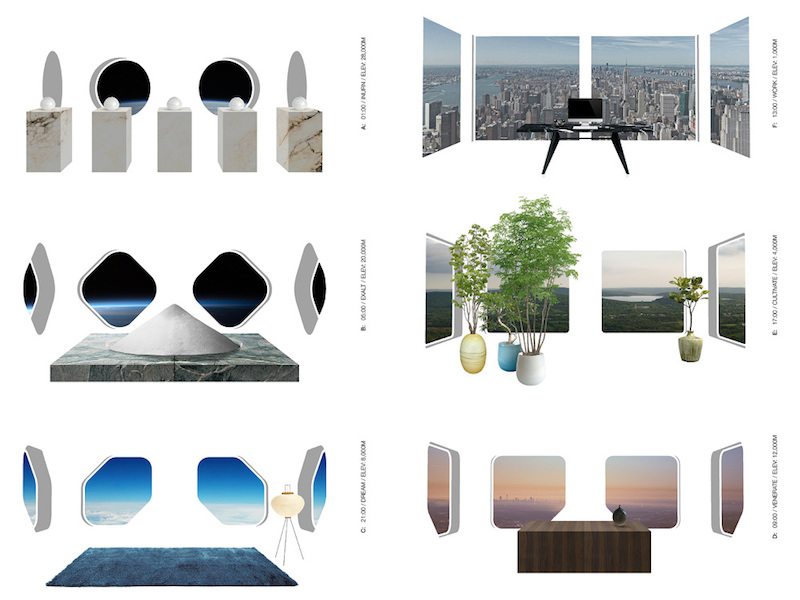 Rendering courtesy of Clouds Architecture.
Rendering courtesy of Clouds Architecture.
Analemma Tower would be powered by space-based solar panels that would receive constant sunlight. Water would be filtered and recycled in a semi-closed loop system and would be replenished by condensate and rainwater from clouds. The elevator system would use cable-less electromagnetic elevators as a workaround to height restrictions imposed by elevator cable spool volume.
Of the tower, Clouds Architecture says, “Analemma Tower is a proposal for the world's tallest building ever. Harnessing the power of planetary design thinking, it taps into the desire for extreme height, seclusion, and constant mobility. If the recent boom in residential towers proves that sales price per square foot rises with floor elevation, then Analemma Tower will command record prices, justifying its high cost of construction.”
Obviously, neither this tower nor anything like it is going to be built anytime soon, so what’s the point? Well, it’s an exercise in imagination and creativity meant to get the metaphorical juices flowing. Every innovative product or service that comes out and changes the world is an amalgamation of speculative ideas, failed projects, and new ideas that stemmed from a simple what if? thought. This is one of those what if? thoughts.
Plus, it’s just pretty damn cool, zany science and all.

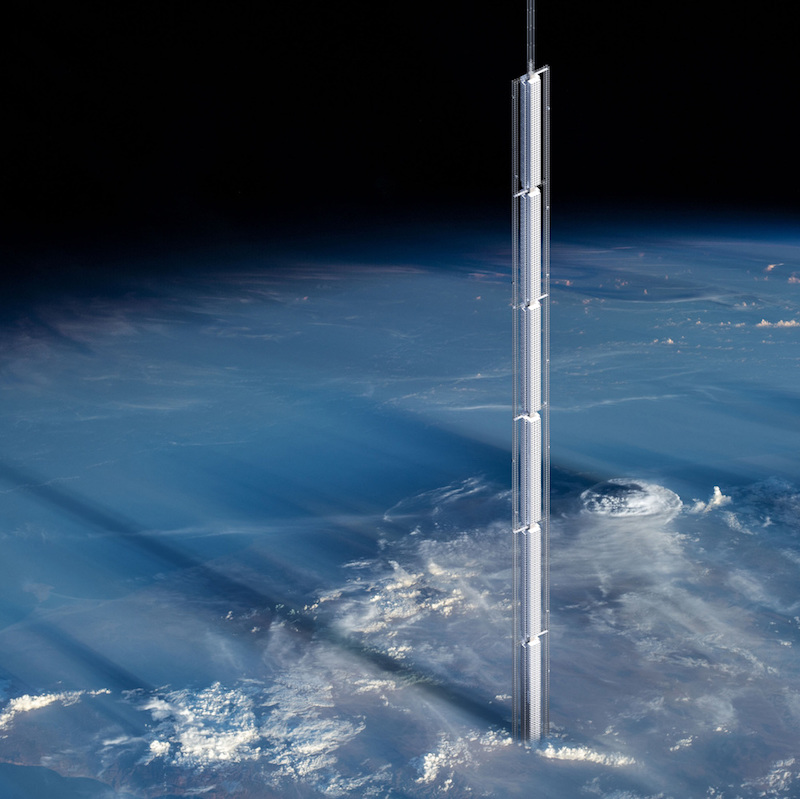 Rendering courtesy of Clouds Architecture.
Rendering courtesy of Clouds Architecture.
 Rendering courtesy of Clouds Architecture.
Rendering courtesy of Clouds Architecture.
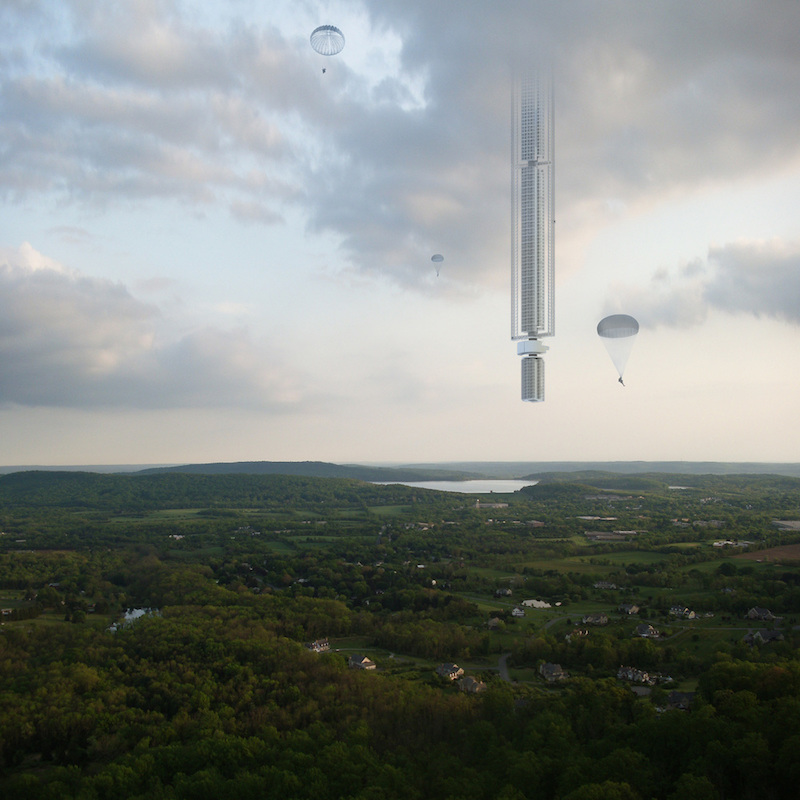 Rendering courtesy of Clouds Architecture.
Rendering courtesy of Clouds Architecture.
Related Stories
High-rise Construction | Feb 8, 2019
Dubai’s newest supertall will be covered in digital displays
SOM designed the tower.
High-rise Construction | Jan 18, 2019
‘Paramount’ will become Nashville’s tallest tower
Goettsch Partners is the project’s architect.
High-rise Construction | Jan 14, 2019
AS+GG-designed tower will be the tallest in China
The tower is at the center of the Shimao Longgang Master Plan.
High-rise Construction | Jan 10, 2019
Indoor-outdoor amenities open leasing value at a San Francisco skyscraper
The amenities that set this 605-foot-tall building apart are its 50,000 sf of outdoor and open spaces that include 14 skydecks and large terraces on its 12th and 28th floors.
High-rise Construction | Dec 13, 2018
Record number of 'supertall' towers were completed in 2018
Citic Tower in Beijing and Vincom Landmark 81 in Ho Chi Minh City are among 18 "supertall" skyscrapers completed this year—a record number, according to the Council on Tall Buildings and Urban Habitat.
High-rise Construction | Aug 27, 2018
The world’s tallest buildings with dampers
The CTBUH created the list as part of a recent study.
High-rise Construction | Aug 8, 2018
Bjarke Ingels Group’s new Shenzhen tower includes a folded building envelope
The new skyscraper is the home of Shenzhen Energy Company.
Multifamily Housing | Aug 7, 2018
Even after redevelopment, the iconic 'Chicago Tribune' sign will remain at 435 N. Michigan Ave.
The newspaper and the building's new owners reached a settlement.
Lighting | Aug 1, 2018
Willis Tower upgrades antenna lighting
The new lights will save Willis Tower more than 70% in antenna-lighting energy costs.
High-rise Construction | Jul 31, 2018
A 350-foot waterfall splashes down from a skyscraper in China
The tower is located in Guiyang’s central business district.


